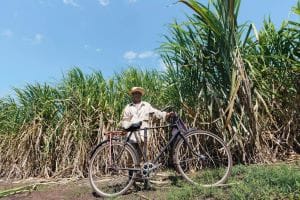Join our friendly crew on the Hoku Nui for a wonderful snorkel tour in the stunning blue waters of the Kona Coast or an amazing manta ray snorkel adventure at the famous Manta Ray Village. In addition to ensuring you have a great experience in the water, our highly knowledgeable crew will update you on important facts on the fish and the manta rays as well as a little local history of the area!
The Sugar Cane industry started on the Big Island of Hawaii during the times of early settlers and played a significant role in Hawaii’s historical sugar cane industry. The Hamakua Coast, with its plentiful rain and volcanic soil, proved to be a prime location for growing sugar cane. Unlike other islands, intensive irrigation wasn’t always necessary.
The rise of sugar plantations brought significant changes to the Big Island. Large areas of land were converted to sugar cane fields, and native forests were sometimes cleared to fuel the mills. Towns like Honoka’a and Laupahoehoe sprung up around these new plantations, and infrastructure projects like the Hawaii Consolidated Railroad, originally called the Hilo Railroad Company’s extensive (and ultimately costly) railroad network were built to support the industry.
Hawaii’s sugar industry peaked around 1980, with the Big Island contributing to a statewide production of roughly 1 million tons of raw sugar annually. This supplied nearly 10% of all the sugar consumed in the United States at that time. However, starting after WWII in the 1950’s the industry went into decline due to factors like more trade opening up causing competition from other countries, changing trade policies, and a decrease in global sugar demand. The Big Island’s last sugar plantation shut down in 1990, marking the end of an era.















